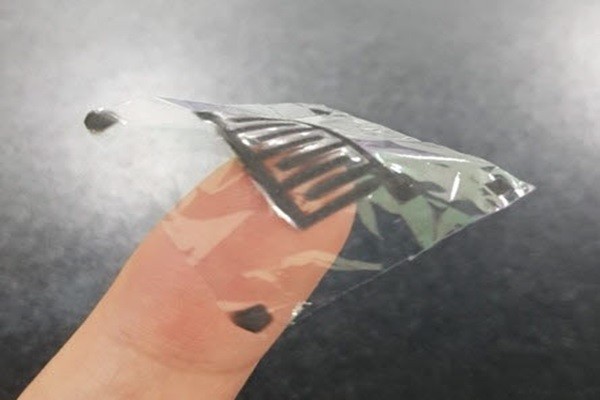A South Korean research team has developed an energy storage device that is thinner than a hair. Due to the device’s excellent mechanical stability, it will be utilized in many ways to develop various wearable devices.
Daegu Gyeongbuk Institute of Science and Technology (DGIST, President Kuk Young) announced on Wednesday that a research team led by Professor Lee Sung-won has developed a super-thin energy storage device that is able to supply power without any issue even when there is physical force.
The research team succeeded in manufacturing supercapacitor as a super-thin film with a thickness of under 0.1 millimeters. The supercapacitor is mechanically flexible as it is able to supply energy without any issue even when it is folded like a sheet of paper.
The supercapacitor’s thickness and storage capacity per area are 23 micrometers and 7.91mF/cm2 respectively. Its thickness is about half of that of a hair that is normally 40 micrometers in thickness. When the supercapacitor had gone through 1,000 charge and discharge cycles, it still had an almost same storage capacity before it had gone through the cycles. In addition to being extremely flexible compared to batteries, its properties do not change even after going through repeated charge and discharge cycles.

Also, the research team applied a mass-production method that sprays graphene ink using a spray solution process and utilizes the supercapacitor as an active electrode. Instead of the current spray process that sprays ink vertically, the team used a spray process that sprays ink at a 45° angle and secured an energy storage efficiency per area that is 30% higher. Also, using a 45° angle allowed the team to solve a low energy efficiency issue that occurs from spray particles getting squashed from gravity of the vertical spray process.
“We have developed a supercapacitor that is thinner than batteries and other supercapacitors and guarantees strong adhesion even on a curved surface like skin and durability.” said Professor Lee. “We are planning to conduct follow-up research as the supercapacitor’s energy storage capacity is still relatively low compared to normal batteries.”
The outcome of the research, which involved Professor Lee, Yoon Young-hoon who holds a master’s degree in new material science, and Nandanapalli who holds a doctor’s degree, was published on the online version of an international scientific journal “Nano Energy”.
Staff Reporter Jung, Jaehoon | jhoon@etnews.com